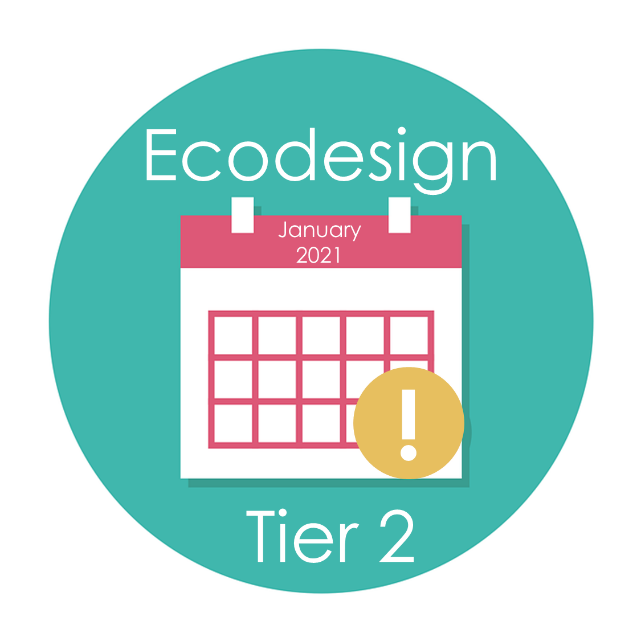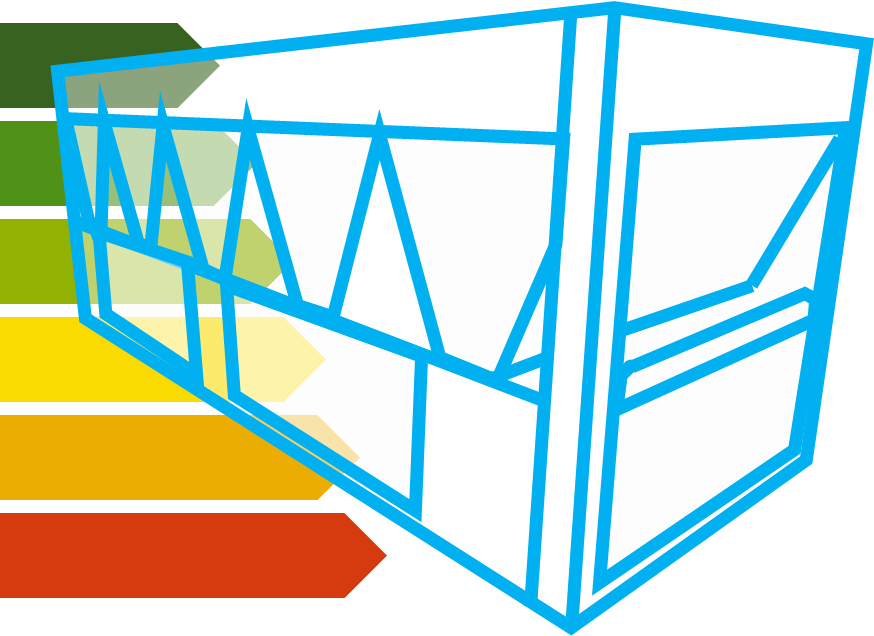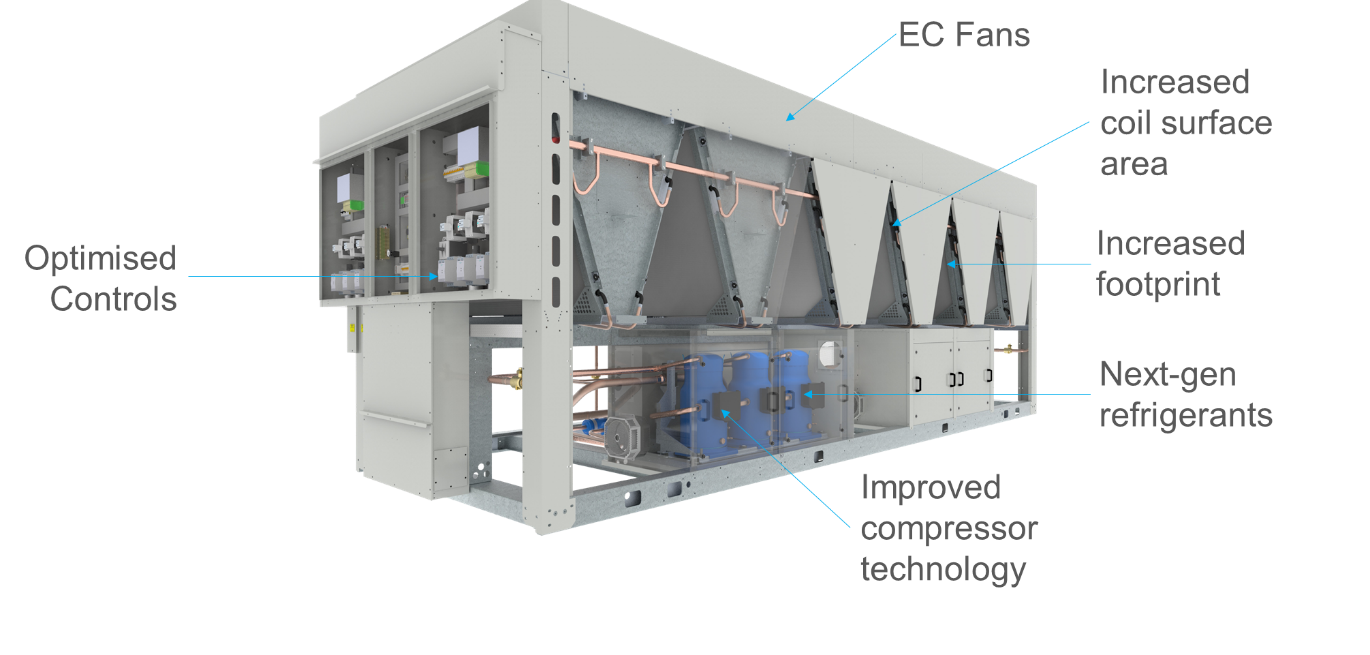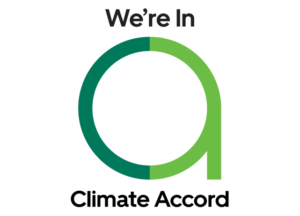Just when you thought it was safe to buy a chiller…
Buying a chiller can be an emotional experience nowadays…even Ecodesign is in tiers.
2018 seems like a long time ago now. Since then we’ve had a world cup, a royal wedding, a presidential impeachment, a new Prime Minister, Brexit shenanigans, a global pandemic…and Greta Thunberg has led the world in demanding a greener future for our planet.
One of the EU’s responses to the global climate emergency was the introduction of Ecodesign regulations for energy using products…and the specific legislation covering much of the HVAC industry came into force on what seems like eons ago now, the 1st January 2018.
We know…Ecodesign has been done to death, it’s been covered heavily not just on the Airedale website. End users, consultants and contractors may be forgiven for thinking that all is rosy; after all, it is incumbent on manufacturers, not them, for ensuring the regulations are adhered to. However, with the passing of the new year and all that went with it, you would be forgiven for forgetting that Ecodesign Tier 2 is here…meaning it is time for the whole industry to once again pay attention.

A Quick Recap
The Ecodesign legislation was introduced by the EU in order to reduce the impact that energy-using products such as air conditioning has on the planet. The directive sets out minimum mandatory requirements for the energy efficiency of these products and helps prevent creation of barriers to trade, improve product quality and deliver environmental protection. As well as air conditioning equipment, it also affects consumer goods like dishwashers, vacuum cleaners, computers and TVs.
With the introduction of the Ecodesign Directive, the different product categories were separated into groups called Lots. Lots that affect industrial refrigeration end-users are collected in two product groups:
- ENTR Lot 1 includes Medium and Low Temperature process chillers (supply water temperatures <-8°C and <-25°C respectively) and condensing units.
- ENTR Lot 21 includes air heating products with a rated capacity not exceeding 1MW, fan coil units and cooling products and high temperature process chillers with a rated cooling capacity not exceeding 2MW

Know your metrics
This article will focus on Lot 21 as ACR News readers will more likely be involved in the products covered by it. Ecodesign allows decision makers to easily compare chiller efficiency performance by looking at two well-defined and straightforward sets of figures for comfort and process cooling. It is important, wherever you sit in the supply chain, to have an understanding of these metrics and how they relate to performance.
Comfort Cooling
The Ecodesign metric for comfort cooling chillers is Seasonal Space Cooling Energy Efficiency (SSCEE). It applies to comfort chillers with a supply water temperature exceeding +2°C and is defined as a percentage. It takes into account the SEER (Seasonal Energy Efficiency Ratio) and annual electricity consumption. It is a similar metric to ESEER in terms of ambient temperature but has defined accurate weightings based on ambient run hours and standby power consumption.
Process Cooling
The Ecodesign metric for industrial High Temperature (HT) Process chillers is Seasonal Energy Performance Ratio (SEPR). It applies to HT process chillers with supply water temperatures between +2°C and +12 °C and defined as a figure (similar to that shown as a SEER or ESEER value), It is calculated as the ratio between the annual refrigeration demand and the annual electricity consumption.
Why should I be aware of the Tier 2 regulations?
Tier 2 compliance became law on 1st January 2021. This means that if you are specifying or purchasing a chiller now, there is a good chance that it will have to be Tier 2 compliant. Products must be compliant with the relevant tier at the date at which they are placed onto the market, i.e. delivered to a customer – either site or a customer’s storage facility. BREXIT does not change anything relating to Ecodesign…the directive has been written into UK law.
In 2017 as preparations for Ecodesign were underway, 85% of comfort chillers above 400kW would not have met the Tier 2 standards. Therefore manufacturers have had to invest significantly in R&D in order to ensure products are compliant for Tiers 1 & now 2. In some cases chillers have increased in size or become more expensive to purchase and this has occurred at the same time as other R&D challenges like the F-Gas regulation.
How manufacturers have achieved compliance

Ecodesign is incumbent on manufacturers, not the supply chain; why should I care?
Well, firstly Ecodesign is designed to help the planet by reducing the EU’s contribution to greenhouse gas emissions. The European Commission estimates that this package of measures will deliver 167 TWh of final energy savings per year by 2030. This is equivalent to the annual energy consumption of Denmark.These savings correspond to a reduction of over 46.million tonnes of CO2 equivalent.
If you’re an end-user, it can help you make significant energy savings as air conditioning can account for 30–40% of the total energy consumption of office buildings. If you’re in the supply chain, as a consultant or contractor, it can provide an effective means for comparing like-for-like product performance.
Although manufacturers are ultimately responsible for compliance, the supply chain must be clear about the application the chiller will be used in, as this effects the Ecodesign metric to be applied. We all also have a moral responsibility to ensure compliant equipment is specified and purchased, as non-compliant chillers create an uneven playing field and cost more to run.
What to look out for
Manufacturers are required by law to provide Ecodesign performance data. Required data is as per Table 10 of the European Commission Regulation (EU) 2016/2281 and should be published on free access areas of manufacturer’s websites. Ecodesign data should be requested if it is not made available (it is not enough to simply take manufacturers at their word). The data must clearly define whether the equipment selection is based on a comfort or process application and it should state compliance to Tier 1, Tier 2 or exemption.
Some manufacturers have played games with the Ecodesign metrics in order to fudge the figures or overstate the performance of their equipment. Airedale have seen evidence of:
- Removal of electrical standby power and absorbed pump power from calculations, yielding greater efficiencies.
- Performance-enhancing re-rates found in multiple manufacturer’s figures of 3-7%
- Some manufacturers are switching compressors off to produce Ecodesign metrics and ensure compliance then offering product with the benefit of all compressors active.
- Extracting more performance from a compressor than the compressor manufacturer states is possible.
- Overstating the free cooling performance of a chiller.
- Enhancing Ecodesign metrics to ensure compliance.
Ecodesign – implementation & enforcement
The manufacturer, authorised representative or importer that first places a regulated product on the EU market (or puts it into service) is responsible for compliance. Product types need to be evaluated at the design stage with reference to the relevant generic or specific measures detailed in the regulations and then self-certified. All products in scope must have a Declaration of Conformity, have a supporting technical file to show compliance and display the CE label. Local enforcement is the responsibility of “Market Surveillance Authorities”, in the UK’s case the OPS&S (Office for Product Safety & Standards, part of BEIS).
Summary
The Ecodesign Directive has been a headache for manufacturers, but is a necessary one. At Airedale, we passionately believe that air conditioning manufacturers and equipment must play a responsible role in an era where sustainability is key to the preservation of our planet.
As the global deployment of air conditioning increases, the industry must do a lot more to ensure the products and solutions we supply are as energy efficient as possible in order to play our part in combatting climate change.
As a British Manufacturer, we are driven by quality and efficiency at every stage of our research, development and manufacturing process. We meet the challenges of regulatory changes head on as we recognise that providing our customers with energy efficient solutions is a critical sustainable development opportunity for us all. Subsequently, it has been a pillar of our business for well over 40 years.
Airedale is committed to environmental responsibility and limiting the environmental impact of our units. For some, less proactive manufacturers, the Ecodesign Directive and the Tier 2 implementation will cause some sizable headaches. As we say goodbye to one of the strangest and most challenging years in living memory, ensure your business isn’t caught unawares this month and let’s continue, as an industry, to show that HVAC has an important role to play in the built environment.
Airedale are offering a new CPD, entitled “Ecodesign: Chillers & Tier 2” – more detail can be found here.







